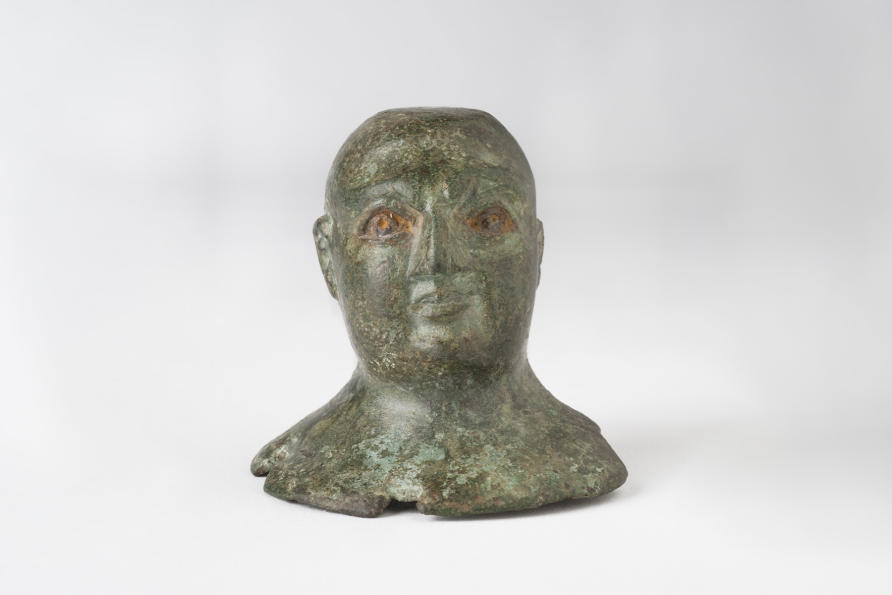古代世界の美、ワイン、そして死
新しい展示では、古代ギリシャ・ローマ世界の女性、子供、奴隷、職人の隠された生活についての洞察が得られます。
メルボルン大学タマラ・ルーウィット博士とキャロライン・タリー博士著
美しく磨かれた真鍮の小さな鏡で自分の顔を見つめる女性の姿を想像してみてください。 彼女は自分の全身を一度も見たことがありません。ギリシャやローマの世界にはそれほど大きな鏡はありません。
彼女は粉チョークで顔を白くし、アカネの植物から作られた染料で頬を赤くします。 彼女の指は、空想的な馬の頭の海の怪物が飾られた丸い皿に浸されます。
私たちは、そのような古代の人々の仕事部屋、寝室、病室、あるいはほとんど痕跡を残さず歴史の記述から無視されることが多い女性、子供、奴隷、職人の隠された日常生活を垣間見ることはめったにありません。
メルボルン大学のオールド クワッドにあるイアン ポッター美術館が企画した新しい 2 部構成の展覧会「古代の生活: 古典と考古学コレクションからの洞察」は、これらの生活についての貴重な窓を提供します。
海の怪物の皿は、展覧会「Amor et Mors: Vessels for the Beautiful Body in Life and Death」の一部で紹介されている数多くの小さな個人的なオブジェクトの 1 つです。
おそらく鏡の前の女性は、自分の美しさを高めるために、チョークや染料の代わりに有毒な鉛白と緋色の辰砂(硫化水銀)を使用しているのでしょう。
ローマの詩人オウィディウスは、砕いたリビア大麦、ビターレンゲ、卵、雄鹿の最初の角を水仙の球根と蜂蜜と混ぜたものを提案しています。こうすることで「このトリートメントを自分の顔に施す女性は、自分の顔よりも滑らかに輝くでしょう」鏡"。
このような混合物は、スフィンクスやライオンなどの動物で装飾され、斑点、四角形、波線で模様が描かれた蓋付きの小さな円筒形または凸形の箱であるピクシスに保管されていたと考えられます。
人々は美しく見えるだけでなく、神聖な香りも求めました。 男性は、ミニチュアのガラス瓶からカルダモンの香水と香りのヘアオイルを自分に塗ります。これはおそらく、職人が息を吹き込んで形作った新しいタイプの瓶です。
吹きガラスは紀元前 1 世紀に近東で発明され (最古の証拠はエルサレムで発見されています)、その地域の職人や奴隷によってローマにもたらされました。
古代の香水は、オリーブ、アーモンド、またはゴマ油と香りのよいバラ、コリアンダー、またはワイルドタイムを混ぜて作られていました。 最も高価な香水には、遠くアラビアやインドからもたらされたエキゾチックな乳香、没薬、シナモン、またはカッシアが含まれていました。 インディアン パチョリは最近スペインで古代の香水瓶から発見されました。
香水と美は生者だけのものではなく、死者のためのものでもありました。 香油や軟膏は遺体を美しくするために使用され、墓に供えられました。
ワインもまた重要な供物であり、葬儀の際に死者に贈られたり、故人の誕生日に穴や管を通して墓に注がれたりしました。
私たちの展覧会の第 2 部「白、黄褐色、血のような赤、黒: ギリシャとローマの世界のワイン」では、神への捧げ物であるワインが、毎日や特別な機会に神棚に注がれ、どのように宗教の重要な部分でもあったのかを探ります。旅行から帰ってきたときなど。
展覧会のコインには、これらの儀式を行っている神々や皇帝が描かれており、最も貧しい漁師、若い女の子、農場の家政婦によっても行われていました。
ワインは医療に広く使用されました。 ローマの家庭療法ハンドブックでは、扁桃腺の痛みには、ハトの糞や潰したヤスデをワインでうがいすることが推奨されています。
ミント、フェンネル、よもぎ(現代のアブサンの主成分)で作られたハーブワインは、咳や胃の不調などの病気の治療に使用されました。
あるギリシャの論文では、馬の媚薬として刻んだトカゲを混ぜたワインの注射を推奨しています。
しかし、ワインは子供たちを含むすべての人にとって普遍的な食事の一部でもありました。 医学専門家は、冷蔵庫で冷やさないと牛乳が傷みやすくなるため、甘酒で柔らかくしたパンを使って赤ちゃんを離乳させることを推奨しました。
Dr Caroline Tully and Dr Tamara Lewit Picture a woman gazing at her face in a small mirror of highly polished brass. She has never seen her whole body – no mirror is that large in the Greek and Roman worlds. She whitens her face with powdered chalk and reddens her cheeks with a dye made from the madder plant. Her fingers dip into a round dish decorated with a fanciful horse-headed sea monster. We can seldom glimpse the workrooms, bedrooms and sickrooms of such ancient people or the hidden everyday lives of women, children, slaves or artisans who have left little trace and are often ignored in the writing of history. Ancient Lives: Insights from the Classics and Archaeology Collection, a new two-part exhibition developed by the Ian Potter Museum of Art at the University of Melbourne’s Old Quad, gives a rare window into these lives. The sea-monster dish is one of the many tiny, personal objects featured in one part of the exhibition: Amor et Mors: Vessels for the Beautiful Body in Life and Death. Instead of chalk and dye, perhaps the woman at the mirror is using poisonous white lead and scarlet cinnabar (mercury sulphide) in her efforts to enhance her beauty. The Roman poet Ovid suggests a mixture of crushed Libyan barley, bitter vetch, eggs and the first horns of a stag, mixed with narcissus bulbs and honey, so that “any woman who applies this treatment to her face will gleam more smoothly than her own mirror”. Such a mixture would have been stored in a pyxis, a small cylindrical or convex box with a lid, decorated with animals like sphinxes and lions and patterned with spots, squares and squiggles. People not only wanted to look beautiful but also to smell divine. A man would anoint himself with cardamon perfume and scented hair oil from a miniature glass bottle – perhaps a new type of bottle, shaped by artisans with their breath. Blown glass was invented in the Near East in the first century BCE (the earliest evidence having been found in Jerusalem) and was brought to Rome by artisans and slaves from the region. Ancient perfumes were made using olive, almond or sesame oil mixed with fragrant rose, coriander or wild thyme. The most expensive perfumes contained exotic frankincense, myrrh, cinnamon or cassia, brought from as far as Arabia and India. Indian patchouli was recently discovered in an ancient perfume bottle in Spain. Perfume and beauty were not only for the living but also for the dead. Fragrant oils and unguents were used to beautify the corpse and were offered at the grave. Wine was another important offering, given to the dead during funerals or poured into the tomb through holes or tubes on the birthdays of the deceased. The second part of our exhibition, White, Tawny, Blood-red, Black: Wine in the Greek and Roman Worlds, explores how wine offerings to the gods were also an essential part of religion, poured at household shrines every day and on special occasions such as returning from a journey. Coins in the exhibition show deities and emperors performing these rites, which were also carried out by the humblest fishermen, young girls or farm housekeepers. Wine was used extensively in medicine. A Roman handbook of home remedies recommends gargling ground pigeon dung or crushed millipedes in wine for sore tonsils. Herbal wines made with mint, fennel and wormwood (the main ingredient of modern absinthe) were used to cure ailments including coughs and stomach upsets. One Greek treatise even recommends an injection of wine mixed with chopped up lizard as a horse aphrodisiac. But wine was also a universal part of the diet for everyone – even children. Medical writers recommended that babies be weaned using bread softened in sweet wine, since without refrigeration milk would easily spoil. Wine was always drunk diluted with at least three or four parts of water, except for religious rituals. Drinking water was often contaminated and was safer when mixed with wine, the acidic and alcohol content killing pathogens. Sour wine, which was virtually vinegar, was distributed as rations to Roman soldiers but would be considered undrinkable today, and slaves drank wine-like drinks made from the skins and pips of grapes soaked in water. Athletes were advised to drink wine only moderately. Wine is frequently referred to in the Christian Gospels, and the wine cup Jesus used at the ‘Last Supper’ came to be called the Holy Grail. According to medieval poetry and legend, it was also used to collect his blood and was much sought by the crusaders as a holy relic. Early Christian devotion is represented in the exhibition by a Tunisian plate fragment stamped with the image of a woolly lamb (a common early Christian symbol). Who stamped it and why? Was the artisan expressing piety or cleverly taking advantage of demand from adherents of this new religion? Perhaps its users felt protected by this sacred symbol as they reclined to dine, reaching into the communal dish of food with their fingers, as was the custom. Cups and jugs, gold coins and terracotta statuettes, a marble cupid, a bronze wrestler, glass bottles and cosmetic pots speak to us with the voices of ancient people about their intimate lives. The exhibition Ancient Lives: Insights from the Classics and Archaeology Collection is jointly curated by Dr Caroline Tully and Dr Tamara Lewit, and presents about 100 objects from the University of Melbourne Classics and Archaeology Collection. The exhibition forms part of the Ian Potter Museum of Art’s artistic program and is presented at the Old Quad while the Potter is undergoing transformation of its entrance and teaching spaces. It is open at the Old Quad, the University of Melbourne, Parkville, from 24 July 2023 – 17 May 2024, Monday to Friday 10-5. Entry is free. There are free Open Day curators’ talks at 11.30am on Sunday 20 August 2023. Banner: The serene face of a dead woman, lips tinted pink and eyes outlined with kohl, gazes at us from this mummy mask. Installation view, Ancient Lives, Old Quad, 2023. Courtesy of Museums and Collections Department, the University of Melbourne. Photo: Christian Capurro.Beauty, wine and death in the ancient world
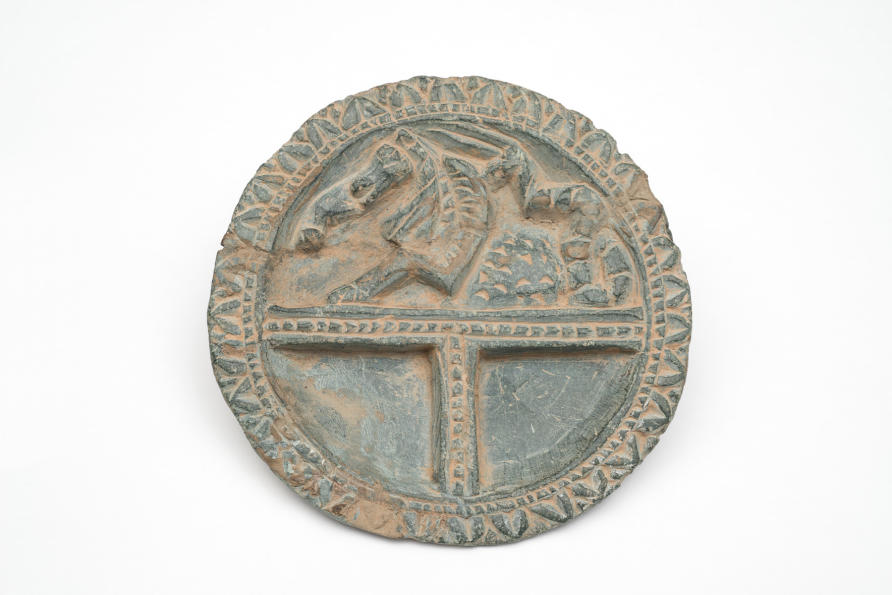
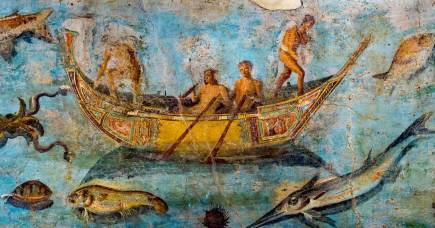
All rivers lead to Rome
LIFE, DEATH AND BEAUTY
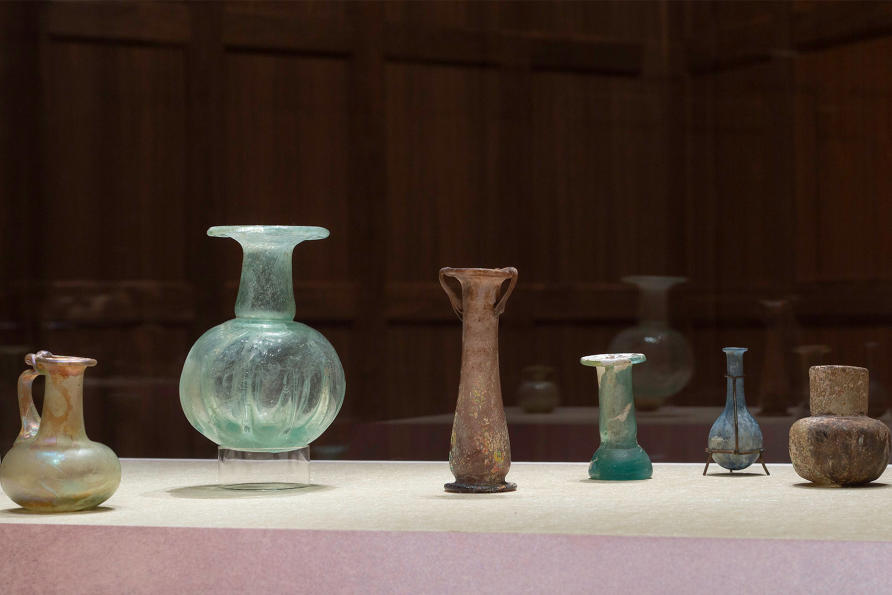
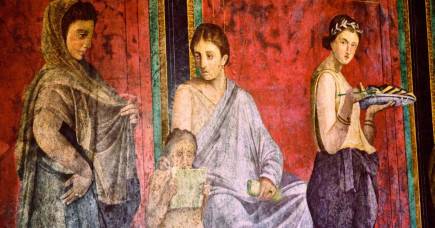
Happy ancient Roman Mother's Day
WINE FOR THE LIVING AND THE DEAD – AND BABIES
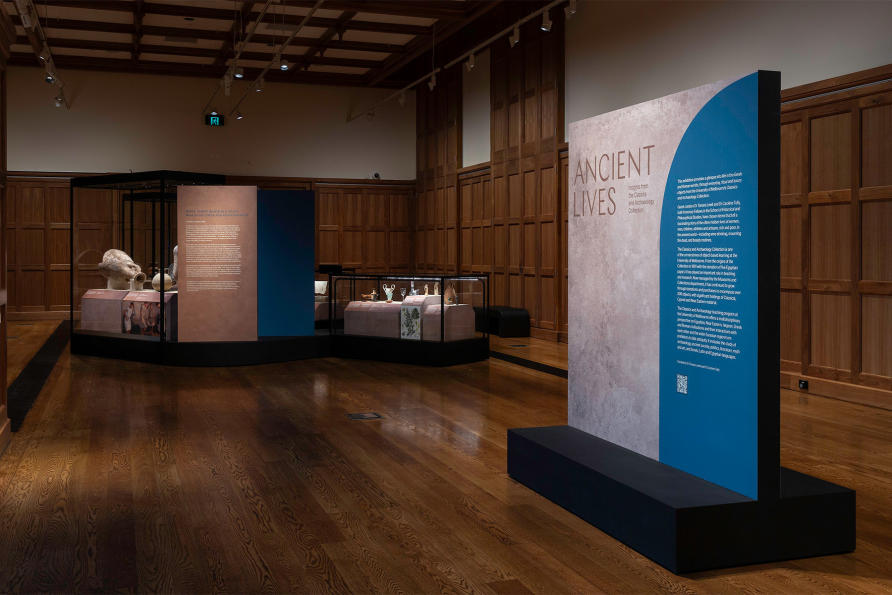
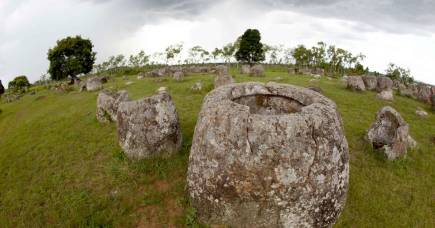
Laos jars are slowly revealing their secrets
